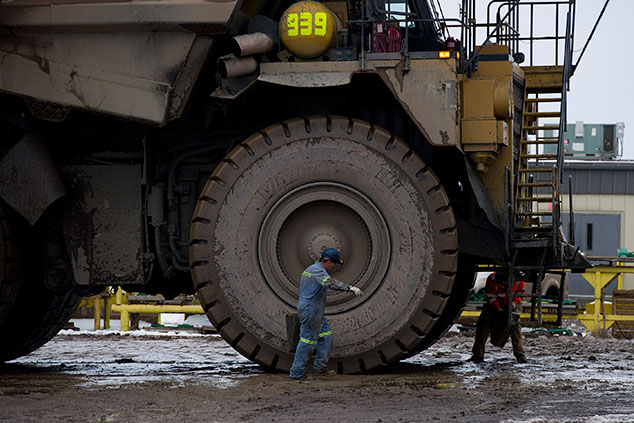
This follows on the heels of the Barrick-Randgold merger, which was announced last September, and completed a fortnight ago.
It’s merger-mania in gold mining. What are the implications?
The top dog merges with a total dog
Until recently, Newmont Mining had enjoyed top dog status as the world’s largest gold miner. It has three producing mines in the US, three in Australia, two in Ghana and two in South America (comparatively stable jurisdictions for a miner). Last year it produced some 5.3 million ounces of gold, and it has further reserves of just under 70 million ounces. Its market capitalisation, before yesterday’s announcement, was close to $17bn.
Over the last ten years, it has been creditable, if unspectacular performer, at least by gold mining standards, and, since 2016, has comfortably outperformed the sector’s benchmark exchange-traded fund (ETF) – GDX (NYSE:GDX).
Goldcorp, on the other hand, which was one of the go-to large caps of the great bull market in gold from 2001 to 2011, has been an utter dog. In fact, by calling it a dog I am insulting dogs.
Goldcorp has four producing mines in Canada, one in Mexico and one in the Dominican Republic. It mined about 2.6 million ounces last year, and has total reserves of around 50 million ounces. Before yesterday’s announcement, its market cap was about $8.5bn.
Over the last ten years, Goldcorp has been a woeful performer. At $9, its share price was the same as it was in 2002, when gold was $300 an ounce. Gold is at $1,290 today. Even by gold mining standards that is awful, and Goldcorp has badly lagged the GDX benchmark for the sector.
In the chart below we see Newmont in black, GDX in red and Goldcorp in green. While they all traded more or less in tandem until the end of 2015, since early 2016 Newmont has beaten the benchmark by about 50%, while Goldcorp has underperformed it by 50%.
The buck stops with the president and CEO, David Garofalo, who took charge of the company in early 2016. He has not done well. When Goldcorp last reported earnings, it fell short of just about every target. This was a sad state of affairs for what was once, by market cap, the world’s largest gold miner.
Once the merger is complete, Newmont’s chief operating officer, Tom Palmer, will take the helm. That in itself is interesting – Newmont’s current CEO, Gary Goldberg, is widely respected and there are many who would see him continue.
But you needn’t worry about Garofalo. If he gets dismissed as a result of the merger, he will collect at least $6.9m, including as much as $4.6m in severance and $464,000 in pension and benefits, according to Bloomberg. He also holds shares worth about $2m. Last year Bloomberg calculates his total compensation at $8.4m. Don’t you just love executive pay?
“Goldcorp management has not done a good job of managing their mines and I’m happy to see Newmont step in,” said a representative from VanEck (which manages GDX), in the understatement of the day.
So what does this deal mean for gold miners?
Newmont is offering 0.328 of its shares plus $0.02 for each Goldcorp share, which effectively values Goldcorp at around $10bn – an 18% premium to Friday. Newmont will own 65% of the new company. Yesterday’s market reaction was more “as expected” than ecstatic – Newmont fell by around 9%, while Goldcorp rose 7%.
There are two ways of looking at the deal. Either Newmont is taking advantage of Goldcorp’s cheap price, or Goldcorp was cheap for good reason and Newmont is wasting its paper buying a turkey. Either way, both companies hope they will now be considerably more attractive to institutional investors, especially with cost efficiency savings forecast at $100m as a result of the merger.
The net result of all of this is that Newmont will regain its status was the world’s largest gold producer, a status it had recently lost to Barrick, after its merger with Randgold. Newmont’s new total annual production will be close to 7.9 million ounces (based on last year’s numbers), compared to about 6.6 million ounces for Barrick-Randgold.
Meanwhile, Newmont’s reserves total over 120 million ounces, quite a jump from Barrick’s, whose reserves are just short of the 80 million ounces mark. Newcrest, meanwhile, has the world’s third-largest reserves at just over 60 million, so there is quite a gap between the three.
In an industry full of big egos and old-school mining machismo, Newmont’s move will ruffle feathers, for sure – especially those of Mark Bristow, formerly of Randgold and Barrick’s new boss. Meanwhile, the likes of Newcrest, Agnico Eagle, Kinross and other large gold producers will feel they have some catching up to do. In other words, we can expect some more mergers.
I have previously tipped B2 Gold (TSX:BTO/NYSE:BTG) in this regard, and, to be blunt, I’m surprised Newmont has gone for Goldcorp ahead of B2. I guess that top-dog status was too attractive to turn down. But B2 is on track to be a million-ounce producer; it is growing; its costs – $504/oz – are low; and it is profitable. I’m fairly confident someone will have it before the end of the year.
As an investor, given the choice between Barrick and Newmont, I’d go for Barrick. Newmont without Goldberg but with Goldcorp’s baggage is a far less enticing prospect than Barrick’s assets with a proven performer like Mark Bristow let loose on them. One investor friend messaged me yesterday about Newmont – saying “another big *expletive* gold stock I’ll never buy”.
If I was a junior mining CEO I’d be quite excited by all this. Over the next year we can expect both Barrick and Newmont to clear out their books of non-priority assets. As a result, for the cannier juniors, there will be an opportunities to pick up overlooked properties, perhaps at fire sale prices.
Things are looking up for mining investors. For now.